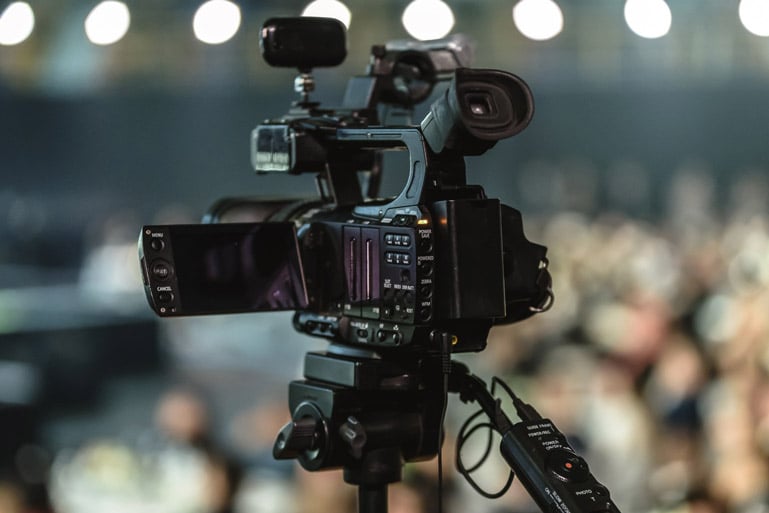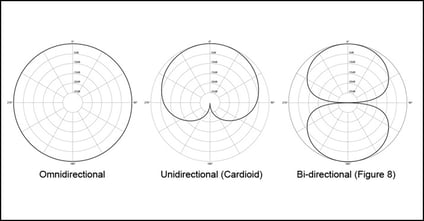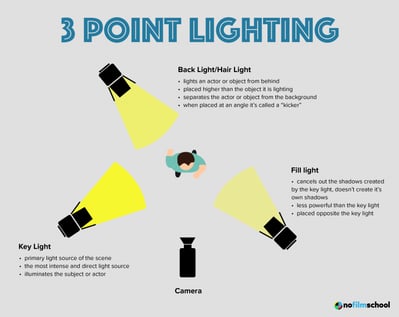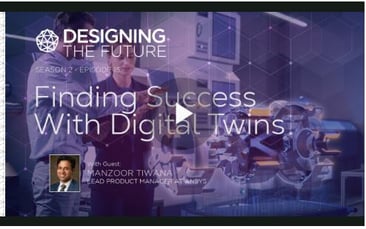 In my previous blog I looked at the reasons why video is such a powerful tool in the hands of technical marketers – click here to go back and read it if you haven’t already. In this article, I want to dive deeper into how technical marketers can use video to effectively reach their audience. So, let’s look at some best practices you can use when creating video content for engineers!
In my previous blog I looked at the reasons why video is such a powerful tool in the hands of technical marketers – click here to go back and read it if you haven’t already. In this article, I want to dive deeper into how technical marketers can use video to effectively reach their audience. So, let’s look at some best practices you can use when creating video content for engineers!
A Filmmaking Philosophy
One of my favourite filmmaking quotes comes from David Fincher, the director of films like The Social Network and Zodiac. When discussing his philosophy on filmmaking, he once said: “A movie is made for an audience and a film is made for both the audience and the filmmakers.”
This quote resonated with me when I first read it. What is the distinction he’s making between a movie and a film? To me, the answer lies in the honesty of the piece. I won’t dive too deep into film criticism – I promise – but stick with me.
Imagine, for a moment, someone created a filmmaking robot. Using Fincher’s philosophy as a guide, I think such a machine could make a perfect movie, but it couldn’t make a perfect film. A movie-making robot could have all the technical knowledge at its disposal (e.g., how to properly light a scene, record and mix audio, operate a high-end camera rig, edit video content, etc.), and could even have some sense of what topics are popular with audiences just from using market research and feedback from viewers. Equipped with these two things, it could make a high-quality movie that has all the look and feel of a Hollywood blockbuster, but it wouldn’t feel personal or like there was any emotional substance to it.
A good filmmaker tells a story that is based in some kind of personal truth. The best films are passionate and emotional, because the filmmaker felt or experienced those things at some point in his/her life. Our hypothetical Movie-Maker-9000 could make a technically apt movie – which, don’t get me wrong, is still an absolutely critical component of creating video content – but it’s only 50% of what goes into quality filmmaking.
Moviemaking vs. Filmmaking
As we explore these best practices for video content together, I’ll be framing my advice along these two lines – the technical and more hard skill-based aspects of moviemaking, and the more personal creativity-based aspects of filmmaking. Keep in mind, both of these are essential to making quality content, but in our race to produce on a biweekly, weekly, or sometimes even daily basis, we sometimes fall into the bad habit of prioritizing one over the other.
The Technical Art of Moviemaking
On the set of a multi-million-dollar Hollywood movie, there would surely be a long list of technical things to consider. However, for the purposes of our marketing content, we can distill our technical considerations down to three key areas: video, audio, and technique.
Video
The quality of your video content is largely determined by – you guessed it – the camera. Cameras come in all shapes, sizes, and budgets so I won’t dive too deep into a comparative analysis of every camera that is available today. However, the old adage that “you get what you pay for” does indeed ring true here, but keep in mind that a more expensive and technically complex camera requires a more capable and technically competent camera operator. The average iPhone camera user is going to be entirely overwhelmed by the dials, switches, and internal mechanisms of a $50,000 RED camera.
However, the flip side is also true – a skilled operator should find the most advanced iPhone camera relatively easy to use and will be able to get the most out of it. Don’t get me wrong, I’m not directly endorsing or recommending the iPhone, but – if your budget is limited – I would recommend trying out a high-quality smartphone camera before diving head-first into a five-figure purchase of a higher-end camera. Many smartphone cameras today are equally as, or sometimes even more powerful than cinema cameras that were being used a decade ago.
It is more important to find skilled talent who know how to properly frame, expose, and light a shot (more on this later), than it is to drop a boatload of money on the most advanced camera on the market.
Audio
Audio quality is extremely important to the overall production quality of your video content. But sadly, it is often overlooked in favour of higher-quality visuals. The fact of the matter is that if you want your video content to be taken seriously, it must sound as good as it looks.
The first, and most important rule when it comes to recording good audio is: you must use a microphone. That might sound obvious, but when I say microphone I mean a dedicated audio input device – not an onboard camera microphone. If you are still recording audio using the built-in microphone on your camera, you are doing it wrong.
So, what kind of mic should you use? I’m glad you asked.
Broadly speaking, there are three kinds of microphones – omnidirectional, bidirectional, and unidirectional. The names of each refer to their recording patterns: omnidirectional mics record audio all around the microphone; bidirectional mics record audio directly in front and behind the microphone; and unidirectional mics record audio on only one side of the microphone (of course, there is audio spill where sounds ‘behind’ a unidirectional microphone are picked up, but the audio will be far quieter than what is picked up in front of it).
Each of these has its use, for example, bi-directional microphones could be used for a one-on-one interview, as the two subjects are sitting across from each other, and the single mic can pick up audio for both individuals. However, by and large, the unidirectional microphone (sometimes called a cardioid microphone, because of the vaguely heart-shaped pattern it records in) is going to be your best go-to mic. The front-facing recording pattern of the cardioid microphone makes it easy to control, as you can simply point the microphone at what you want it to record and worry less (you can never not worry at all) about it picking up the sound of the busy crowd behind you. If you could only buy one microphone, I would recommend looking for a unidirectional mic.
However, omnidirectional microphones have their place as well. For example, most lavaliere microphones (also called lav mics) are omnidirectional. Lav mics are small microphones you can clip to a blazer, shirt, or tie, which are designed to pick up the audio of the person wearing the lav mic. The only problem with these is that they pick up sound all around them, so they’re not always the best option when – for example – recording an interview at a trade show, or on a shop floor. The lav mic will pick up your interviewee’s audio just fine, but you’ll be hard-pressed to isolate their voice without the surrounding noise.
Audio can be tricky, but the key takeaway here is to invest in a dedicated microphone to accompany your camera. Do not use the onboard microphone that comes with your camera; your audio will sound amateurish and will distract from the substance of your video content.
Technique
Technique is a broad term I’m using to refer to everything else that impacts the technical quality of your video content. In short, you’ll want to consider the following three elements of production: lighting, framing, and location.
When it comes to lighting, try to conform to the rules of 3-point lighting whenever possible. 3-point lighting is a technique that uses three lights (shocking, I know): a key light which is the primary and most powerful light pointed at the subject of the shot; a fill light which is weaker than the key light and is designed to control the shadows on the opposite side of the subject; and a back light, which is used when trying to separate a subject from the background of a shot.
This is a very basic introduction to 3-point lighting, and the intensity, colour, and angles of each light, and in different combinations, can have varied effects on your shot. 3-point lighting isn’t applicable to every type of scenario, but if you keep it in mind when composing a shot on the fly, you’ll find your lighting looks professional more often than not.
When it comes to framing a shot for marketing content and specifically interviews, consider how many angles you want to record from. If your budget allows for it – I would highly recommend investing in a second camera to capture two angles of the same thing. This allows you to cut back and forth seamlessly from one camera angle to the other, which adds visual flair and punch to your shots. Otherwise, don’t overthink the framing too much. Close-ups, medium shots, and the occasional full shot are really all you need. If you’re considering whether to use something like a dutch angle, then you’re probably overthinking it (or you’re just very artistic, in which case more power to you!).
Finally, the setting or filming location of your video content is important to consider, particularly for content related to engineers and other technical professions. A workplace, a factory, a trade show floor, any real location that reflects the subject matter being discussed is always your best option when it comes to filming locations. However, keep in mind our earlier discussion on audio – real locations are often noisy locations, so plan ahead by using the right kind of microphone.
Over the years I’ve had numerous people ask me whether green screening can be used to avoid the additional costs and headaches associated with on-site shooting. My answer has always been that greenscreen is very useful for three types of people: meteorologists, Hollywood VFX teams with million-dollar budgets, and finally all of the above. Trust me when I say that green screen is not the answer. It’s surprisingly expensive and heavily labour-intensive to perfect a green screen shot and, best-case scenario, your shot looks as believable as if you had just gone to the actual location to shoot.
The Creative Art of Filmmaking
Hopefully, by this point, you have a pretty good sense of what technical skills and equipment are necessary for creating great video content. I now want to spend a little bit of time exploring what makes for good video content once you have this in place.
"Make a Film for Yourself"
The quote above comes from the director of the Lord of the Rings trilogy, Peter Jackson, who once said: “The most honest form of filmmaking is to make a film for yourself.” If you are reading this article, chances are you’re a marketer working in some kind of technical or engineering-related field. If that’s the case, no one knows what intrigues engineers better than the engineers you are surrounded by on a daily basis. Better still, maybe you are an engineer yourself in which case, you already know what interests and excites you.
Channel your own personal interests and curiosities into your video content. If you are intrigued by some new technology, manufacturing process, design principle, or piece of industry news, chances are others just like you will be as well. Also, by tackling topics that interest and excite you or your team, you’ll find it easier to create the content. Working on a project that actually excites you makes that project less of a chore, and more of a fun activity.
The passion and excitement that you personally feel for the topics you cover in your video content will shine through to the viewer – trust me on this one.
Variety and Structure
Personal passion is a necessary ingredient for quality content, but if you’re going to create videos on a regular schedule you also need some amount of planning. Engineering.com published an e-book earlier this year that offers some tips on how you can work with engineers to create regular and consistent content – click here to access the e-book. Much of what I’ll cover in this section is addressed in more detail in the e-book, so I highly recommend you give it a read!

The first thing to consider when planning for content is variety. There are two forms of variety to think about: variety of topics, and variety of formats. Topical variety should be straightforward; leave room between videos that cover the same topics. There are exceptions to this of course (for example, you’re creating a series of videos all on the same topic), but whenever possible try to change things up from video to video. On the other hand, variety of format might not be as obvious. What I mean by this is to try to offer multiple forms of video content for your users. For example, at engineering.com our This Week in Engineering video series offers viewers a bite-sized overview of the latest technology and industry news for each week. However, for viewers who want a deeper dive into specifics, we also produce interview series’ like Manufacturing the Future and Designing the Future. In this way, we’re able to produce video content for both types of viewers.

In addition to variety between videos, you also want to think about structure within videos. Engineers are detailed-oriented people, and they tend to like receiving information in a particular way. Whenever I’m creating a new video for engineers, I try to make sure I’m giving them four basic types of information: 1) a high-level overview or general discussion of the topic; 2) more technical details or specifics when it’s appropriate; 3) how this information can help engineers be more informed or help them do their jobs better; and 4) why it’s important to share this information with their colleagues or peers. If I’ve managed to provide these four pieces of information within a given video, I feel as though I’ve done my job by offering value to each viewer.
At minimum, always try to answer the question “how is this information relevant to me” with each video. If you helped an engineer do their job better with your video, you’ve succeeded.
There's No Business Like Show Business!
You now should have a fairly good idea of what it takes to make quality video content for engineers. We’ve covered everything from the equipment and techniques you should be using, to what sources of inspiration and creativity you should be drawing from. Like I mentioned in my last article, video is the fastest-growing form of content on the internet today. If you’re not already, I hope I’ve convinced you to take advantage of this exciting medium – I promise you won’t regret diving in.
In a future blog post, I’ll walk through in detail the creation of our latest video series – our Engineering Roundtable Series – so you have a clear understanding of how our team at engineering.com approaches video production from as early as ideation, all the way through to post-production and publishing.
At engineering.com, we have a dedicated video platform for engineering-related video content. You can access our video content from our website at www.engineering.com, or you can visit our YouTube channel here.
If you have any questions or thoughts related to this blog article or video production in general, please share your comment below!





